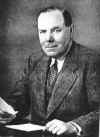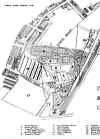John Bryson Orr - Orr`s Zinc White, a
basic paint pigment.
The Industrial Revolution in Scotland did
not happen overnight but the Scots already had a reputation
for the design of agricultural implements and the
improvement of machinery, such as Small`s new plough design
( 1763) Andrew Meikle`s power driven threshing machine
(1786) and Patrick Bell`s horse drawn reaper (1826). In
America Hugh Orr (1717 - 1798) of Lochwinnoch was
responsible for the introduction of the first tilt hammer,
new ploughing tools - and guns for the American
revolutionaries. The Scots also acquired a reputation for
proactive thinking and the middle classes of the day were
rapidly becoming entrepreneurs, developing new ways of
manufacture and grasping the opportunities that arose from
the Industrial developments in the Scottish Lowlands.
Following the American War of
Independence there was an impetus to the cotton industry in
Scotland and the use of new technology brought from
Lancashire. This saw the likes of Neil Snodgrass of Glasgow
inventing the scutching machine used in wool preparation
(1792); William Kelly of New Lanark who applied power to
Compton`s mule (1790 ) and Archibald Buchanan who built the
first integrated cotton mill (1807) This expansion led to
other demands in bleaching, dying and printing thus the Vale
of Leven enjoyed greater prosperity and saw the foundation
of the St Rollox chemical works, the biggest chemical works
in the world in its day, making bleaching powder.
From my perambulations round the internet
I knew of the US patent Office index and had noted some six
patents held by Orrs all in the field of industrial
chemistry. I was therefore delighted when a fellow
researcher gave me information of a privately printed book `Orr`s
Zinc White - The First Fifty Years ` printed by the Imperial
Smelting Corporation in 1948. and the story of an innovative
home grown chemist. - John Bryson Orr (1840 - 1933) born in
Blantyre, Lanarkshire.
 J.
B. Orr developed and patented a process for the manufacture
of a paint pigment. ` Orr`s Zinc White ` ( Patent 517 of
1874) which had a novel manufacture as it included a
calcining process (heat treatment) of the basic chemicals .
His process led to a major change in the pigment and paint
industry. Perhaps older members can recall with me the task
of `whitewashing` or ` liming ` the walls of the detached
toilet ( closet, dry earth type ) and the walls of the
backyard because it brought a brightness and sense of space
to it. J B Orr was the creator of `Duresco` the first
washable distemper widely used on both internal and external
walls.
J.
B. Orr developed and patented a process for the manufacture
of a paint pigment. ` Orr`s Zinc White ` ( Patent 517 of
1874) which had a novel manufacture as it included a
calcining process (heat treatment) of the basic chemicals .
His process led to a major change in the pigment and paint
industry. Perhaps older members can recall with me the task
of `whitewashing` or ` liming ` the walls of the detached
toilet ( closet, dry earth type ) and the walls of the
backyard because it brought a brightness and sense of space
to it. J B Orr was the creator of `Duresco` the first
washable distemper widely used on both internal and external
walls.
J B Orr was the son of a dyer and was
apprenticed to the firm of Lewis, McLellan and Co., Oil and
Colourmen and Drysalters in Glasgow. where he studied
chemistry at the Andersonian College. He travelled widely
and was in Europe on the outbreak of the Franco German war
so he acted as an unofficial war correspondent for a Glasgow
newspaper. He returned to Glasgow and in 1872 set up a
factory for the manufacture of ` lithopone ` which meant
merely a white mineral product prepared artificially rather
than occurring naturally.
Black is white .... sometimes
An amusing aspect of the earlier products
was ` a chamelion like behaviour in bright sunlight `.
rather like the silver compounds used in photographic film.
There is the case of a policeman on point duty in a
supposedly white rubber coat but which was in fact black on
the sunny side and white on the shady. And that of the
farmer whose freshly painted white gate turned black at noon
but was white again when the puzzled painter was brought to
the scene in the late afternoon. J B Orr`s invention
produced a lightfast product and in time became the basic
pigment for the paint industry. In 1930 the company was
merged with the Imperial Smelting Corporation Ltd of which
he was a director until his death on 23 September 1933.
The significance of the invention to the
town of Widnes was great. Until 1898 J B Orr had devoted
himself to the colour trade but in that year he expanded
into industrial development at the Vine Works, Widnes.
Workers of the area were long used to handling chemicals and with a good hinterland for raw
materials, Widnes was a prime location for the manufacture
of a product that grew to over a quarter of a million tons
annually. The works was a significant employer and one
renowned and way ahead of its time, for conferring benefits
of pensions, welfare, forums for discussion, and
opportunities for job enhancement and advancement.
handling chemicals and with a good hinterland for raw
materials, Widnes was a prime location for the manufacture
of a product that grew to over a quarter of a million tons
annually. The works was a significant employer and one
renowned and way ahead of its time, for conferring benefits
of pensions, welfare, forums for discussion, and
opportunities for job enhancement and advancement.
D J W Orr

Plan of the Widnes Works